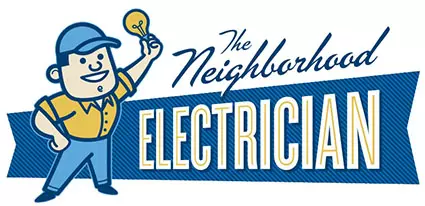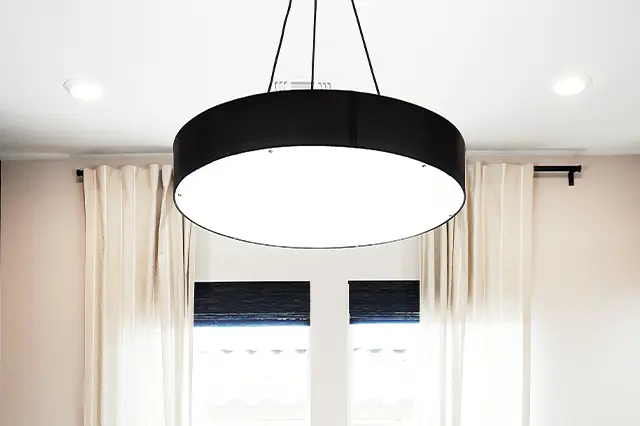A Beginner’s Guide To Lighting Repairs: What You Need To Know Before You Start
Lights are a vital part of our home and commercial spaces, from illuminating to providing safety and security. When lights go out or malfunction, it can be a stressful experience. However, many people don’t know how to go about repairing the issue. This beginner’s guide to lighting repairs will cover everything you should consider before attempting any repair work yourself. From understanding electricity and circuit diagrams, to what tools you’ll need and some basic maintenance tips – we’ve got you covered! So let’s get started.
Tools and Materials Needed for Lighting Repairs
If you’re planning on tackling some lighting repairs around your home, there are a few tools and materials you’ll need to have on hand before getting started. Here’s a quick rundown of what you’ll need:
-A ladder: Unless you’re comfortable working at heights, you’ll need a ladder to reach any light fixtures that are up high.
-A screwdriver: You’ll need a screwdriver to remove screws from light fixtures in order to access the bulbs or wiring.
-Replacement light bulbs: Obviously, you’ll need new bulbs if you’re replacing burned out ones. Be sure to get the right type and size of bulb for your fixture.
-Replacement wiring: If your light fixture’s wiring is frayed or damaged, you’ll need to replace it before continuing with any repairs.
-Electrical tape: This will be used to secure any loose wires and ensure a safe repair job.
-Pliers: A set of pliers will come in handy for bending or snipping wires, as well as for tightening screws.
-A voltage tester: Last but not least, you’ll need a voltage tester to ensure that the circuit is off before beginning any wiring repairs.
With these tools and materials on hand, you’ll be ready to tackle any lighting repairs that come up around your home. Good luck!
Basic Lighting Repair Techniques
Assuming that you have a basic understanding of lighting and electricity, there are some very simple techniques that can be used to repair most lighting problems. These include:
– Replacing light bulbs: This is the most common type of lighting repair. Simply remove the old bulb and screw in a new one.
– Cleaning light fixtures: Over time, dust and dirt can accumulate on light fixtures, causing them to work less efficiently. To clean them, simply unscrew the fixture from the ceiling or wall and wipe it down with a damp cloth.
– Adjusting light switches: If your lights are not turning on or off properly, it may be due to a loose switch. To fix this, simply tighten the screws on the switch plate.
– Replacing light fixtures: If your light fixture is damaged or outdated, it may be necessary to replace it entirely. This is a more advanced repair, so it is best to consult an electrician if you are unsure how to proceed.
These are just a few of the most basic lighting repair techniques. With the right tools and some patience, you can easily solve most lighting problems yourself.
More Advanced Lighting Repair Techniques
When it comes to more advanced lighting repair techniques, there are a few things you need to know before you start. First, always make sure you have the proper tools and safety gear for the job. Second, be aware of the different types of light fixtures and how to properly disassemble them. Finally, always test your repairs before putting the fixture back in use.
With the proper tools and safety gear, the first step is to identify the type of light fixture you are working with. There are three common types of light fixtures: incandescent, fluorescent, and LED. Each type has its own set ofrepair instructions.
Next, you will need to gather the necessary tools for the job. For an incandescent fixture, you will need a screwdriver, wire strippers, and pliers. For a fluorescent fixture, you will need a screwdriver and a pair of needle-nose pliers. For an LED fixture, you will only need a Phillips head screwdriver.
Once you have gathered your materials, it is time to begin repairs. With an incandescent light, you will need to remove the bulbs before beginning any repairs. To do this, simply unscrew each bulb from its socket and set it aside in a safe place. With a fluorescent light, you will need to remove the tubes before beginning any repairs. To do this, twist each tube counterclockwise until it comes loose from its socket. With an LED light, you will need to remove the driver before beginning any repairs. To do this, unscrew the driver from its mounting plate and set it aside in a safe place.
Once you have removed all of the components from the light fixture, you can begin to make repairs. Depending on what type of repair is necessary, you may need to replace bulbs, sockets, or drivers. To replace bulbs, simply unscrew each old bulb and install a new one in its place. For socket replacements, use needle-nose pliers to carefully remove the old socket and replace it with a new one. For driver replacements, use a Phillips head screwdriver to carefully remove the old driver and replace it with a new one.
Once your repairs are complete, test your lights to ensure they are working properly before putting them back in use. After testing them out and confirming that they work correctly, you can reinstall all of your components back into their respective places and move your light fixture back into position!
Troubleshooting Common Lighting Problems
If you’re having trouble with your lights, there are a few common problems that you can check for and try to fix yourself. First, make sure that all of the bulbs in your fixture are working. If one is burned out, replace it with a new bulb of the same wattage. Next, check the connections to make sure they’re tight and free of corrosion. If they look damaged, you may need to replace them. Finally, check the switch to make sure it’s turned on. If it is, try flipping it off and on again to see if that fixes the problem.
If you’ve checked all of these things and your lights still aren’t working, it’s time to call an electrician.
Tips for Hiring a Professional Lighting Repair Service
When it comes to lighting repairs, it is important to hire a professional service. There are a few things you should keep in mind when hiring a professional lighting repair service:
1. Make sure the company is licensed and insured. This will protect you in case of any accidents or damage to your property.
2. Ask for references. A reputable company should be able to provide you with a list of satisfied customers.
3. Get an estimate in writing. This will help you compare prices and services between different companies.
4. Make sure the company has experience with the type of lighting you have. Some companies specialize in certain types of lighting, so it is important to make sure they can handle your repair needs.
5. Ask questions about the repair process. Make sure you understand exactly what the company is going to do and how long it will take.
6. Check reviews online. This can help you get an idea of how other customers have rated their experience with the company.
7. Get a warranty on any repairs done by the service. This will give you peace of mind that your repairs are covered if something goes wrong down the road.
By following these tips, you can ensure that you hire a professional lighting repair service that is qualified and experienced. This will help you get the best possible results and keep your lighting in top shape for years to come.
Conclusion
Working on lighting repairs can be intimidating and complex, but taking the time to understand the basics is essential. With a bit of knowledge and some preparation, you can easily handle many common lighting repair tasks. From electrical safety tips to basic troubleshooting techniques, this beginner’s guide has provided all the information needed for successful DIY lighting repairs. Now that you know what it takes to get started, why not give it a try yourself?

